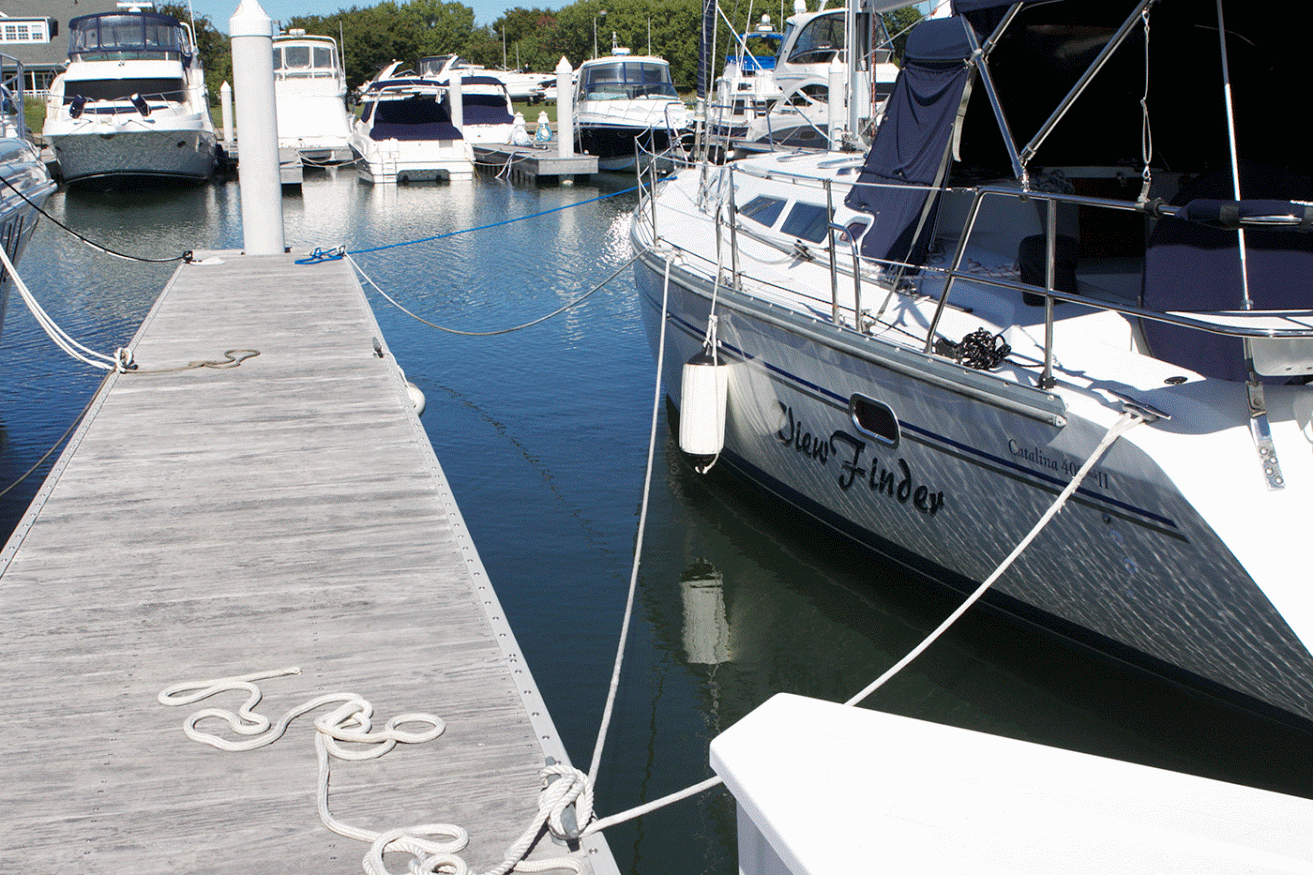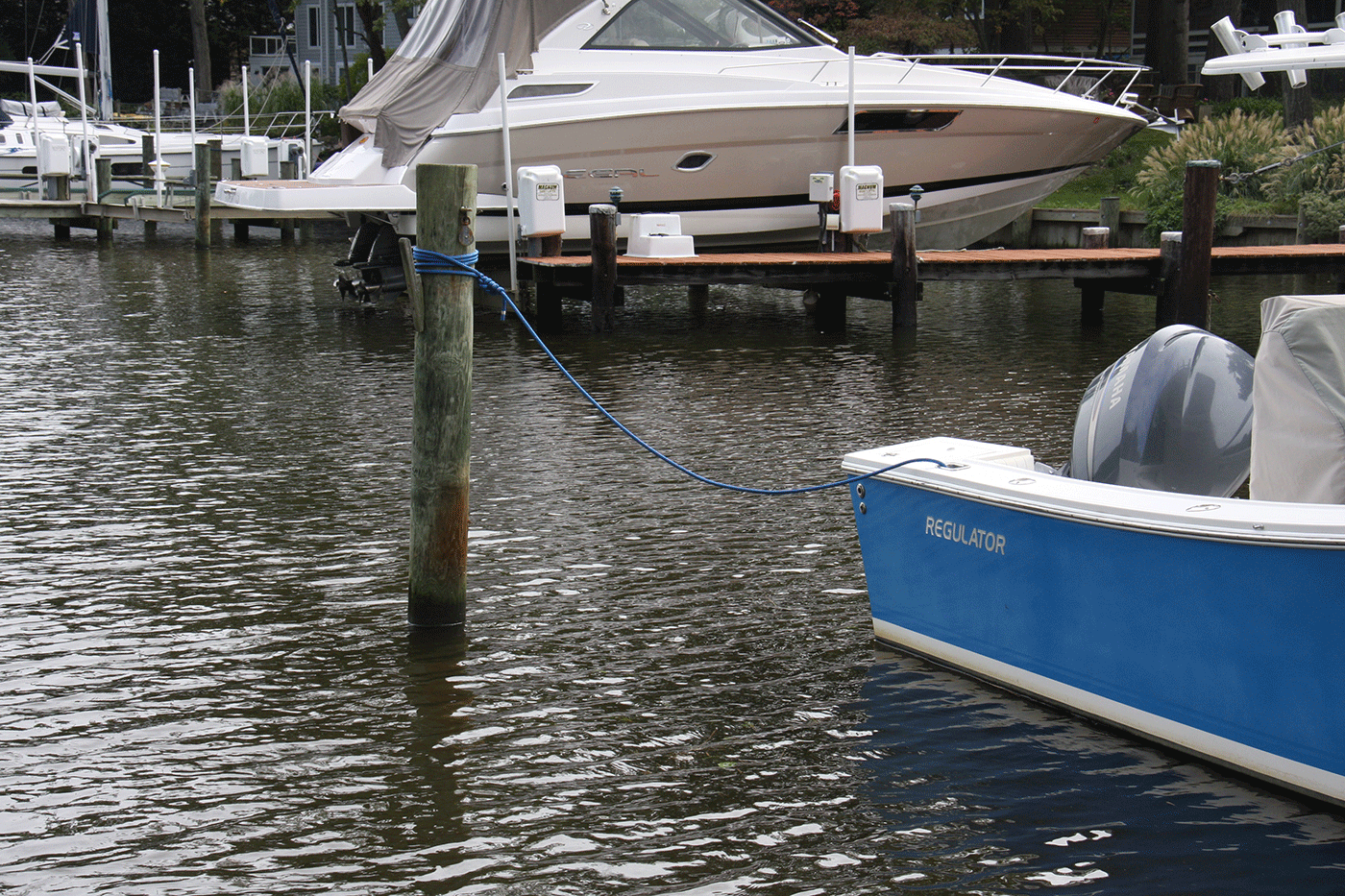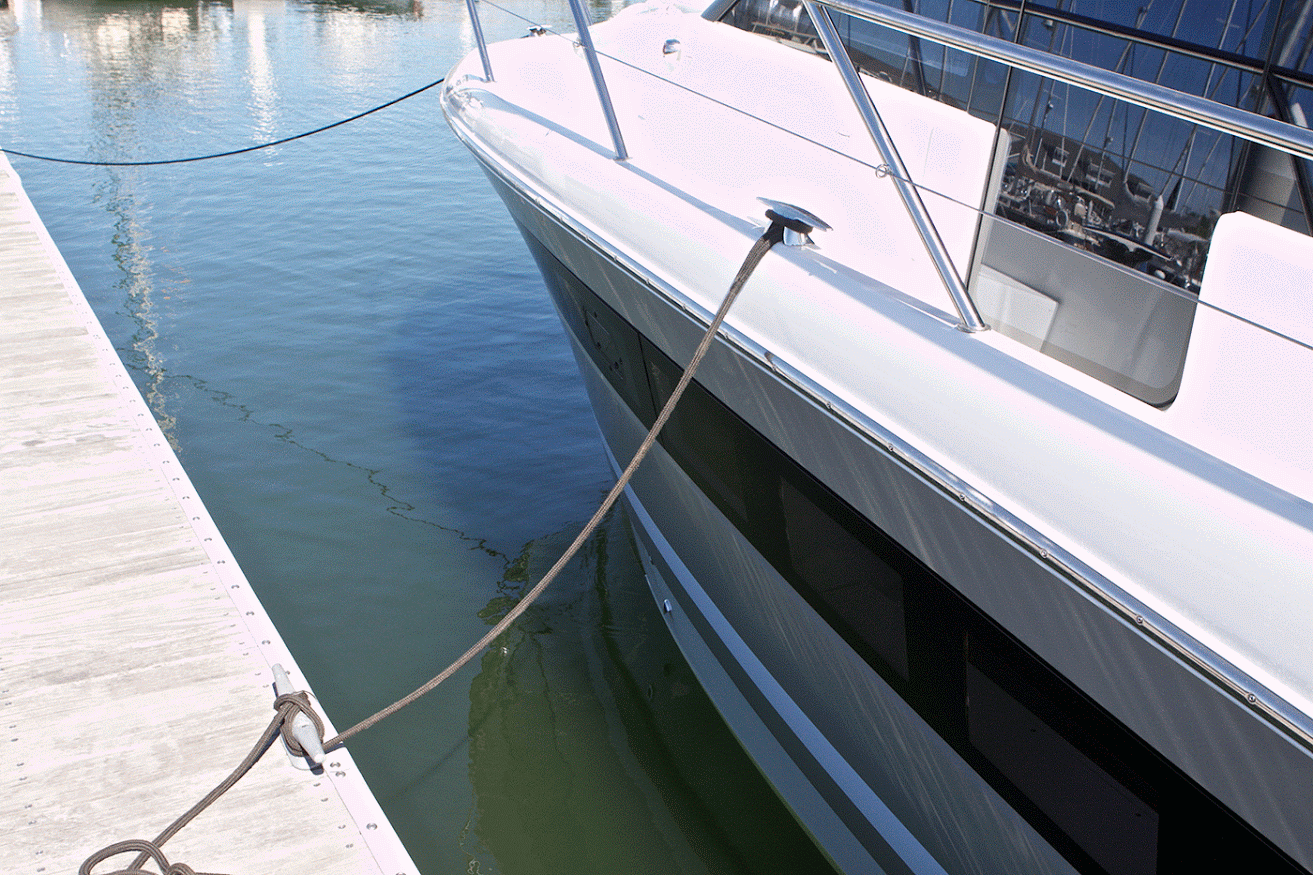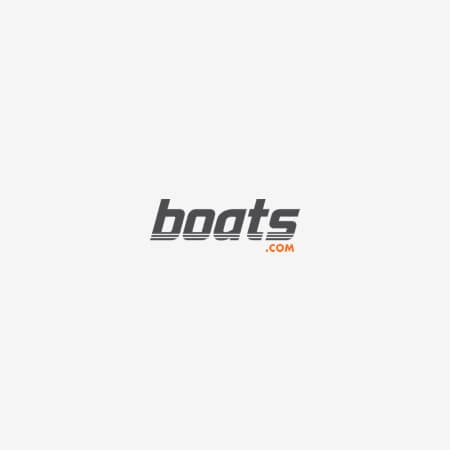Tying Up Boats: Mooring Basics
Do you know how to properly moor your boat?
Aside from knowing how to safely run a boat out on the water, being able to securely moor it is one of the most important skills a boater can possess. Yet it’s something that’s frequently done very poorly—and even by boaters with lots of experience. While it may not seem like a big deal, there are plenty of instances where a bad mooring job causes major damage not only to the boat, but also to other boats around it. Whether you’ve got a pontoon boat or an inflatable dinghy, knowing how to properly secure your boat can certainly prevent a lot of expensive headaches.
Before we dig into the heart of the matter let’s take a look at some basic nomenclature that will make it all clearer.
Lines
- Bow Lines: Bow lines stop the bow of a boat from moving side to side. A bow line also keeps a boat from drifting away when tied alongside, such as when you’re tied off to a bulkhead or pier.
- Breast Lines: Breast lines are used to keep a boat from moving away from a pier, or to make it easier when pulling the boat closer for easier boarding.
- Spring Lines: Spring lines keep a boat from moving forward or aft. Generally only two of these lines are required, but as many as four are sometimes used, depending on the situation.
- Stern Lines: Stern lines prevent the stern of a boat from moving side to side or, when tying up alongside a bulkhead or pier, a stern line keeps a boat from drifting away from the dock.
Other Mooring Gear
- Fenders: Fenders can be anything from a flat piece of foam to a large inflatable rubber buoy. They’re designed to cushion your boat when you’re tied up alongside a pier or bulkhead, or in any other instance when there’s simply no way to prevent your vessel from making contact with a dock, piling, pier, or another boat. Avoid the urge to call these “bumpers” at all cost; this will mark you as a boating newbie.
- Cleats: A cleat is a horn- or T-shaped piece of hardware on a boat or dock that’s designed to secured lines.
- Pilings: A piling is a long piece of timber or metal that’s driven into the bottom. Some pilings stand on their own, while others have structures such as bulkheads, docks, or piers attached to them. When a cleat is not present they can be used to secure a dock line.

The boat’s port side, pictured here, has a bow line, forward and aft spring lines, and a stern line., all attached to cleats. It's a good mooring job, though we wish the excess line left on the dock had been neatly coiled.
When you pull into a slip or alongside a pier or bulkhead you’ll usually encounter two things to tie your boat to: cleats and pilings. Some places will have a combination of both, while some have only one or the other. Knowing how to secure a line to both a cleat and a piling is vital to tying up your boat, so let’s have a look at how it's done.
Cleats and Pilings
Tying off to a cleat—either on your boat or on the dock—is easy. The best way to learn it is by watching our How to Cleat a Line video. If your dock lines have pre-spliced loops in them you can simply weave the loop through the center of the cleat (the eye) and then drape it back over both cleat horns before pulling it tight.
Tying off to a piling can be more challenging. You can use either a clove hitch, which you can learn how to tie by watching our How to Tie a Clove Hitch video, or you can use a loop in the end of a line—either by tying a bowline (yes, we have a bowline video showing you how to tie this knot, too,) or using a line with a pre-spliced loop—and drape it around the piling. Or, you can put the bitter end of the dock line through the loop, lower it over the piling, then pull it tight.

You’ll often use pilings for attaching your mooring lines. This boater has attached his in an unconventional manner, since this is the boat’s home slip and the lines never come off the pilings.
Tying Up in a Slip or Berth
The terms “slip” or “berth” can generally be used interchangeably, depending on where you do your boating. Either way, a slip or berth is a defined area between two piers, two sets of pilings, or a combination of the two.
The idea when tying up in a slip is to keep the boat far enough away from the dock, pilings, and other boats as to avoid hitting them, but not so far as to make boarding difficult. You’ll usually need six total lines: four lines for your bow and stern (two each) and two spring lines. The spring lines should be about one and a half times the length of your boat while the bow and stern lines can be at or just under the length of your boat.
Using the techniques we discussed above to secure your lines to a piling or dock cleats, tie off a line to each bow cleat to keep the boat from moving side to side. Keep in mind that you may sometimes need to crisscross them to get the correct angle. Repeat the process with your two stern lines. Make sure your lines aren’t hitting any hard chafe-points and aren’t tangled in any way. Neatly coil excess line on deck.
Spring lines are a bit trickier. Just remember, we’re trying to keep your boat from moving fore and aft. First secure a spring line to a cleat or piling that’s near the stern of your boat. Next, run it forward to either an amidships cleat or all the way to a bow cleat. This forward spring line line will prevent your boat from moving ahead in the slip. Next, secure another spring line from a cleat or piling that’s at or forward of the bow, back to the aforementioned amidships cleat or all the way aft to a stern cleat. This line will keep your boat from moving backward in its slip. You can run the fore and aft springs on opposite sides, if necessary.
Lastly, be sure you leave enough slack in all of your dock lines to account for the rise and fall of the tide in your area. Spring lines should remain fairly taught, however, and are generally able to adjust with the tide, especially the longer they are. And don’t forget to place fenders where any potential contact points occur.
Tying Up Alongside
Securing your boat alongside a pier or bulkhead is another common scenario you’ll encounter. Fenders are an important part of the equation, to provide cushioning and protection from the piers or bulkheads you’ll be tying up to. Most folks tie them off with a piece of line and hang them between the boat and the pier or bulkhead, usually from deck railings or lifelines, though some boats have special cleats just for hanging fenders.
Tying up alongside is very much like tying up in a slip or berth, but you’ll only be worried about half of the equation. Two spring lines should be rigged the same way as we discussed when tying up in a slip. Also run a stern and bow line like we discussed above, though naturally, you can only put these on one side of the boat.

A breast line keeps this powerboat from drifting too far away from the dock and makes it easier to pull it in when boarding.
If you find your boat wandering out from the pier or bulkhead too far because of the angle of your bow or stern line, consider running a breast line perpendicular from the pier or bulkhead to an amidships cleat. You can also run an individual breast line to the stern and the bow cleat.
One thing a lot of boaters fail to do after they’ve secured all their dock lines is to test out how good a job they’ve done. You can see if you’ve done a proper job tying up by tugging on each dock line aggressively, to make sure the boat doesn’t hit anything as it swings back and forth. As with anything, practice makes perfect. The more docking situations you encounter, the better you’ll become at getting your boat tucked in properly.













